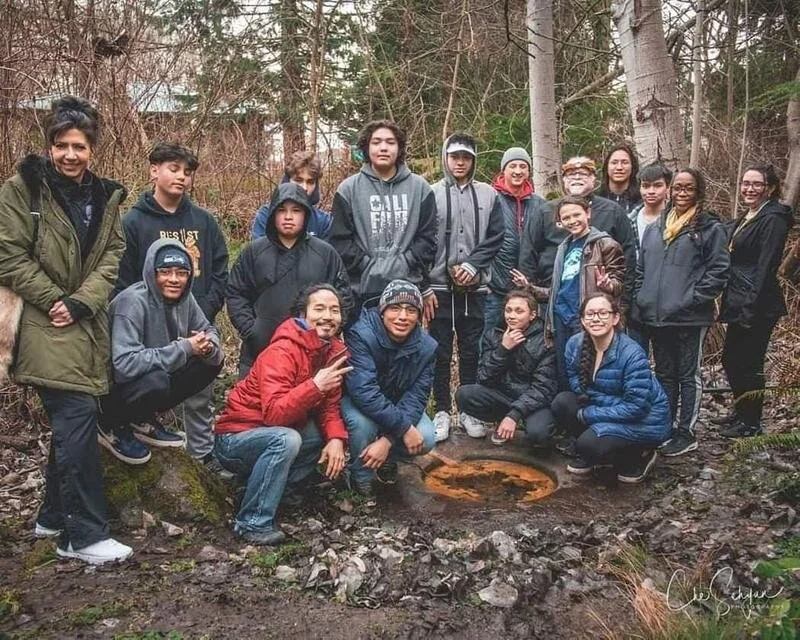Seattle gets first Native American historical landmark by Cullen Zackuse
In 2013, a historically Native American based school, Indian Heritage, was torn down in the northern Seattle area it devastated the urban Native community. Those who remember Indian Heritage and know the significance of Licton Springs wanted to make sure it was protected from development and possible desecration because Licton Springs is located directly across the street.
For most of America’s history, the interactions with Native people have been about destroying our culture, removing our ties to land and forcing us to assimilate. That’s why the recognition of Licton Springs as a National Historic Landmark is so important. It protects one of the few sacred sites that still exists in an urban landscape. It protects and brings our history to life for both our people and the non-Native people of the area. It reminds modern America that we were here long before the modern government, and we are still here.
If you’ve never heard of Licton Springs you’re not alone. In a small park in Northgate overshadowed by condos and high rises, after walking through a network of trails, you’ll see a small hole in the ground. This hole is called Licton Spring. Licton is derived from the Lushootseed word “liq’təd” which means red mud. Licton Springs in particular is rich with iron oxide, magnesium sulfide. Coast Salish elder and historian Tom Speer said, “liq’təd, the red ochre, was used since time immemorial.” It was used before European colonization for religious ceremonies such as baby namings, weddings, and even buried with people during funerals”.
According to Tom, Licton Springs is, “the last sacred site in the ancestral homeland of Seattle. Due to development around Lake Washington other springs were capped off and destroyed”. Although this landmark has huge significance to the first people of the Puget Sound there is little recognition of its Indigenous value.
This issue was addressed by local Seattle Native American youth program, Urban Native Education Alliance (UNEA). The youth program teamed up with Seattle public libraries and coordinated an extensive amount of community workshops to make this project happen. The initiative to protect the spring was started by Oglala Sioux member Sarah Sense-Wilson, executive director of UNEA.
UNEA Clear Sky Native youth at Licton Springs
Local Activist Matt Remle (Lakota) first heard of Licton Springs’ historic significance from elders such as Chief Andy Delos Angeles of Snoqualmie and Ken Workman descendant, of Chief Seattle himself. Matt described being able to feel “the energy” when being at the site. Matt and his team then brought the importance of preserving the spring to Seattle’s Historic Landmark Committee.
One story in particular about the healing powers of Licton Springs not only involves Native history but also non-Native history. It follows two Coast Salish leaders, Chief Lake John and Dr. James Zackuse, who met and befriended one of Seattle’s founders, David Denny. David’s daughter Emily had an incurable skin ailment that white doctors could not fix. She met the Chiefs, who gave her a drink from the spring, which eventually cured her. She ended up writing about this experience as an adult in 1909, about being helped by these first nation doctors. Many of Doctor Zackuse’s descendants have been spread across Indian reservations in the Pacific Northwest including Tulalip, Muckleshoot, and Snoqualmie.
liq’təd photo by Cullen Zackuse
This story was one of the key components in having Licton Springs made into a historic landmark. The historic landmark status passed, but still has to go to Seattle City Council before being approved. Getting this status means that what remains of Licton Springs will be untouched.
A common rhetoric when developers want to destroy a sacred place to Native Americans is, “If it was sacred to you, then why are you just bringing it up now?” said Matt. He explained that Native Americans have an obligation to protect the lands and what is sacred. “If we don’t get there before developers come it will be too late,”
This sacred place is unique due to it being in a highly urban area, “You don’t really hear about sacred sites that are left in urban cities,” said Matt. Learning about sacred sites and Indigenous knowledge brings more awareness and closeness to our natural environment, and reawakens how important tribal people are to the history of lands here. Hopefully the Licton Springs project and landmark recognition brings more awareness to sacred Native American sites all over the U.S.
By Cullen Zackuse (Tulalip) this article first appeared here Tulalip News

